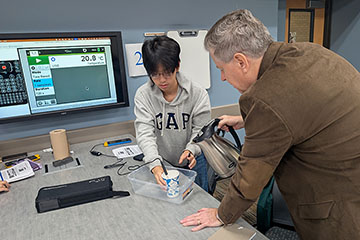Great Lakes invaded: Invasive species jump canal
Sethu Jagadeesan shares how the AI model he is developing for his thesis project can help identify invasive fish sneaking into the Great Lakes.
Sethu Mettukulam Jagadeesan has recently completed his Thesis project for his Master of Science in Computer Science. The project “Developing an Efficient and Effective Pipeline to Support Surveillance of Unintended Passage in Riverine Environments” is using a program they created to identify invasive species of fish who are jumping across the fish pass, a barrier between the Michigan Great Lakes and canals to the Atlantic Ocean.
They do this by setting up cameras to take pictures along the canal. The program uses artificial intelligence to learn the behaviors of the fish and eventually determine its species.
Right now, the program is able to detect and capture photographs of the fish but currently cannot determine what type of fish it is. They hope with the use of many images as a data set the program will learn to detect and inform someone of any invasive species.
This project was suggested and supported by Jesse Eickholt, PhD, as Sethu’s supervisor and Sethu has a lot of gratitude towards his project group members Johnathan Gregory, who helped build the model, and Jordan Elizabeth Leh, who helped with the research.
In the future, Sethu hopes that once the program is able to fully identify the species of fish, the program will become open-source and free for use for anyone in similar studies or anyone who wants to know what goes on with these invasive fish.
This story is brought to you by the Office of Research and Graduate Studies.




